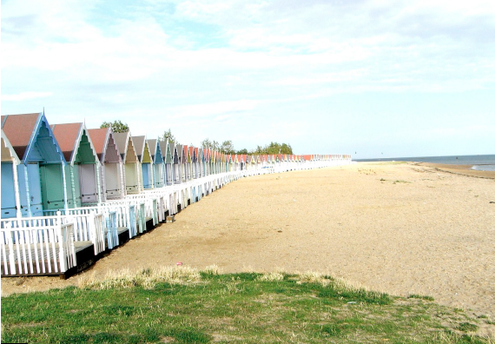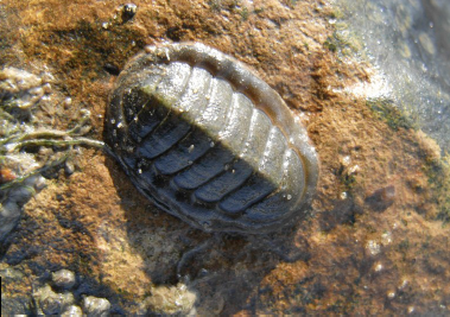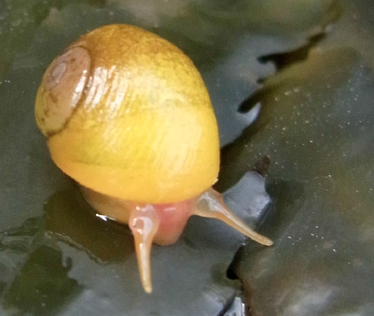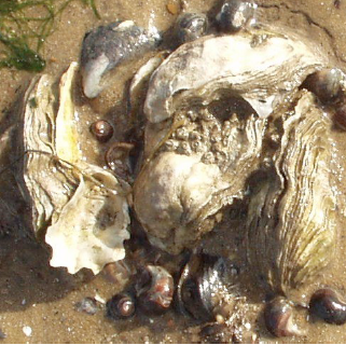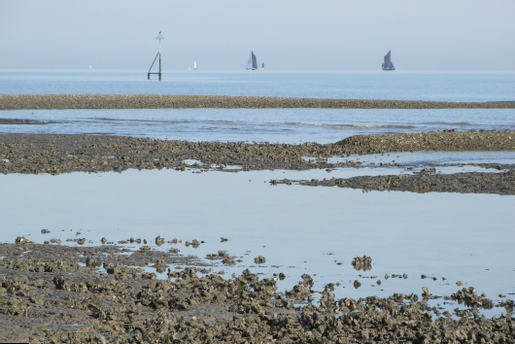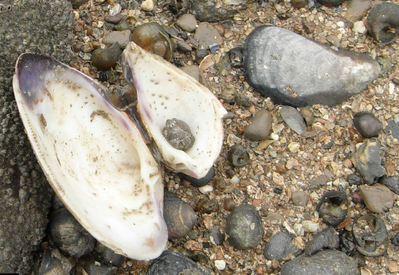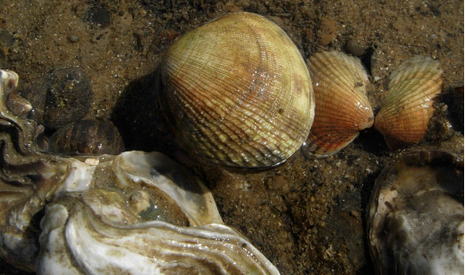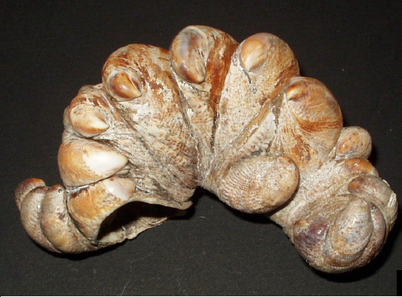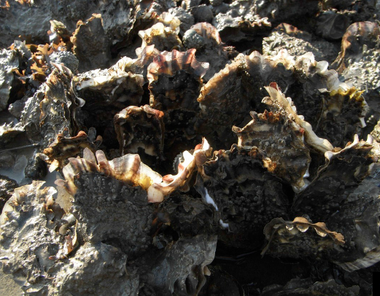The changing foreshore of Mersea Island
|
Species |
May 1974 |
July 2010 |
|
Lepidochiton cinerea |
LC |
LO |
|
Patella vulgata |
LO |
DR |
|
Littorina saxatilis |
LO |
LR |
|
Littorina littorea |
LC |
LO |
|
Crepidula fornicata |
LC |
LO |
|
Littorina obtusata |
LO |
DR |
|
Gibbula cinerea |
LO |
DO |
|
Gibbula tumida |
DR |
|
|
Nucella lapillus |
LO |
DR VOS |
|
Buccinum undatum |
DO |
DO |
|
Nassarius reticulata |
LO |
DO |
|
Ocenebra erinacea |
DO |
DR VOS |
|
Urosalpinx cinerea |
LC |
DR1 |
|
Natica catena |
DO |
|
|
Trivia arctica |
DR2 |
|
|
Lora rufa |
DO |
|
|
Lora turricula |
DO |
|
|
Hydrobia ulvae |
DO |
LC3 |
|
Phytia myosotis |
LO4 |
|
|
Rissoa membranacea |
DO |
|
|
Turbonilla elegantissima |
DO |
|
|
Cardium edule |
LC |
LR |
|
Cardium glaucum |
DO |
DO |
|
Cardium exiguum |
DO |
DO |
|
Mytilus edulis |
LC |
LO |
|
Ostrea edulis |
DO |
DO |
|
Scrobicularia plana |
LO |
DO |
|
Macoma balthica |
LC |
DR |
|
Mya arenaria |
LO |
DO |
|
Mya truncata |
LO |
DO |
|
Corbula gibba |
DR |
|
|
Spisula solida |
DO |
|
|
Venerupis pullastra |
LO |
DR |
|
Tapes aurea |
DR VOS |
|
|
Petricola pholadiformis |
DO |
|
|
Barnea parva |
DO |
|
|
Barnea candida |
DO |
|
|
Crassostrea angulata |
DO |
|
|
Crassostrea gigas |
DO |
|
|
Tapes philippinarium |
LO |
|
|
Mercenaria mercenaria |
LO |
|
|
Key
L = live D = dead C = common |
O = occasional
R = rare VOS = very old shell Blank = none |
1. Urosalpinx cinerea comes inshore to lay eggs early in the year.
2. Trivia arctica may have come from the Red Crag at Walton-on-the-Naze.
3. Hydrobia ulvae was living in the small piece of salt marsh behind the beach.
4. Phytia myosotis was living under the Suaeda fruticosa at the top of the beach.

